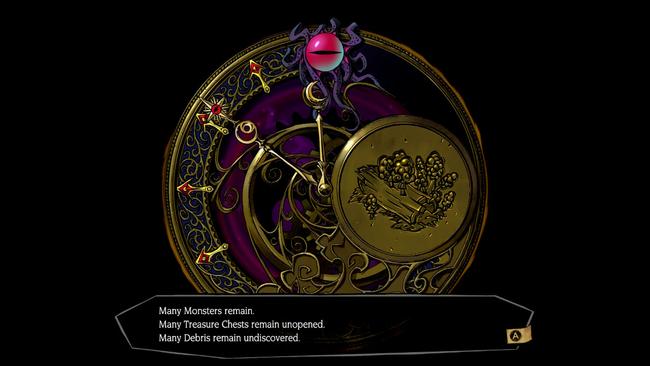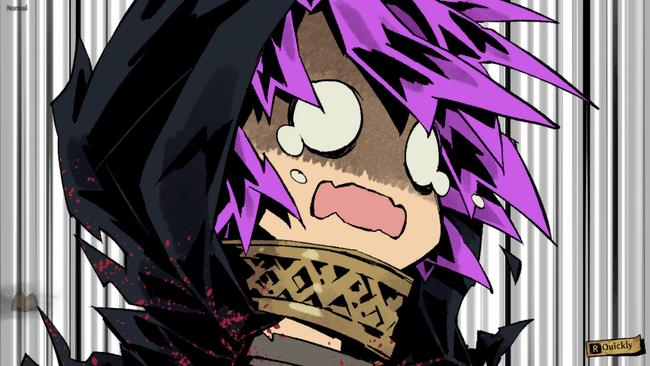
The Clock Is Ticking Towards Mistover’s Doomsday
Mistover is a dungeon-crawling RPG that was originally released in late 2019, but not even three years later it’s being delisted from all digital storefronts. The reasoning for the removal is vague, citing a license expiration between Krafton and Arc System Works. While the game has always garnered a mixed opinion it seems a shame to almost lose it entirely.
I tend to dislike comparing games directly, but the influence of Darkest Dungeon is smudged all over Mistover’s chibi-esque anime style. Additionally, Mistover also takes major gameplay inspiration from the gameplay of the Mystery Dungeon series, with top-down grid-based exploration and resource management that turns into formation-focused turn-based combat. I remember playing both demos of Mistover and feeling quite interested in this new take on dungeon crawling, but for whatever reason I didn’t get around to really playing it until learning of its impending erasure.
In Mistover’s world, a horrid vortex has torn up most of the environment, spreading a mist full of evil creatures. While the spread of the mist has stopped, hopeful explorers have ventured into it hoping to remove the mist once and for all. As someone who ventured into the mist and has forgotten yourself, you’re recruited into an expedition corps and tasked with this grand quest to save the last of humanity. The world is gloomy, though unfortunately really the narrative doesn’t get much more interesting beyond this initial premise, and most of the characters are really basic.

Getting around dungeons requires careful management of hunger, which if kept full enough, heals your party with every step. You must also maintain your luminosity, which is how much of the area you can see around you. Keys can be found in order to open chests, which can reward you with consumables or equipment. Clearing debris can occasionally give other benefits, while many traps can also be found in the labyrinth, which should be avoided when possible. Items found in (and taken into) the mist can become contaminated, reducing their effectiveness and potentially triggering a bad effect when used. Careful exploration is difficult thanks to monsters respawning, though avoiding previously trodden areas helps.
What I found to be the most irritating part of exploration was that diagonal movement is useful, but you can’t do it if there’s something directly in front of you, even though that isn’t where you are moving. There is also a careful balance of item management, which probably contributed to early criticisms of the game being too random. Something I initially thought odd to say about a roguelike dungeon RPG, but the game has been adjusted over time as many players reportedly found that they were constantly using more money than they could gain. When losing a party member requires you to recruit more, being broke is basically the end of your run. I can, however, certainly agree that the expeditions take up quite a lot of time, with the average one possibly taking around half an hour or more. The game also auto-saves at every opportunity, so it’s better to stick things out as you’re going to have to finish what you started, rage-quit or no.
There are eight playable classes you can place into your party of five, whether it’s a naughty nun or an Onmyoji, who is very useful for removing debuffs. They all have unique skills that can be upgraded upon level up with some cash at the training grounds, but some classes do feel a bit more useful than others. Both your team and the opponents are in their own 3x3 grid, with what moves you can use and on whom, being dependent on where you are standing. Co-op skills can be employed between different classes so long as the correct party member is behind them, which can make for some devastating attacks. Thismakes it all the more important that you keep your formation, but certain moves and enemy attacks (not to mention getting ambushed) will push you around. That said, I felt most enemies had a greater range than some classes did, so changing their position tends to be more for your own set-up rather than an attempt to stop their reach.
You can switch out your party leader at any time, which grants you their class-specific exploration ability, such as the Paladin who can destroy all obstacles within a radius without sacrificing team HP, or the Ronin who can move in a straight line until you run into something for fast exploration. Utilising all the mechanics of the game is extremely important as, even with some balance changes, the game is unforgiving. There’s a small numberof areas found in the mist, with a few dungeons each. The final dungeon in an expedition will house a boss fight, but you’ll have to reach them first. Another common complaint is the lack of enemy variety; each area comes with new foes to face, but I can see that there could’ve been more at least given how much time you’ll spend fighting them.
Between trips to the mist, there are a handful of things to do in town like fusing equipment, turning jinxes (aka negative passive effectives) into blessings, or picking up a new recruit to replace your fallen comrade though there’s never quite as good. Equipment really can make a huge difference as I found myself struggling in early fights until I could actually stand more than a couple of hits, but unfortunately you only get what you can find or fuse.

There are three difficulties, and even normal seems to be sticking to the usual dungeon RPG level of hard. There are some gameplay customisation options, such as removing different status effects, being able to ignore formation and so on. You can even make it harder for yourself by removing the limbo mechanic which gives party members a turn to avoid death if they hit zero health. The Doomsday Clock is perhaps the most controversial feature of this game, though thankfully you can turn it off. Unless you are absolutely dying for a challenge or are quite confident, I’d honestly go without it (as you can do so in the options). At the end of each expedition your progress will be tracked, and if you don’t do well enough in your exploration (including opening chests and removing debris) or lose a party member the clock will tick forward. If it goes all the way forward, the world will end, along with your game. With just one bad run,I escaped to preserve the lives of my remaining party members, which resulted in the clock going up several ticks and uncomfortably close to a game over. Entering dungeons with a lower level than your party members will make it move a bit no matter what. So while grinding is somehow discouraged, you’re also better off having a secondary team to pick up some lower rank quests, and to be the back-ups in case of a severe wipe.
I thought perhaps part of the licensing issue might have to do with the ‘Dr. Faust’s Otherworldy Adventure’ DLC, which is also sold as a bundle with the game, but it can’t be the only reason as otherwise they’d simply remove that alone from sale. After all, it’s a Guilty Gear crossover. It contains a small single dungeon, unaffected by the Doom Clock that is specific to your team’s level. This does create a nice bonus area for grinding without nearly as many of the usual consequences. Of course, to escape the dungeon you’ll need to face Faust himself as a boss and hope you don’t fall victim to a kancho attack. It’s a colourful little place with especially tricky traps, and it is unique that consumables that don’t get contaminated by the mist. For those who want to take the game’s challenge seriously it should probably be avoided the first time, as not only does it provide a semi-safe grinding area, but relatively good equipment to boot. Still given how small the area is, it does seem a smidge overpriced when placed with the full game.

Mistover did have a physical release in Asia for both the Playstation 4 and Nintendo Switch versions, with Korean, English, Japanese and Chinese language options. So while finding a physical copy won’t be impossible, purchasing the game will still be out of the question for some. Thankfully, having a PC release will help with preservation, especially since the physical versions released before the DLC. It’s too bad there isn’t a discount for it’s last days on sale. When it comes to losing digital games the case of Mistover does seem the most mysterious, and the plug is being pulled rather than leaving it to rot like many other games.
I’ve liked it enough to keep at it, at least until I inevitably back myself into an unwinnable corner. So I recommend you at least give the demo a try since that is still currently up for anyone who wants to get a feel for the mechanics before the chance is gone. We aren’t losing a masterpiece, but that doesn’t mean that Mistover shouldn’t be mourned. It’s an interesting blend of its influences with some rather rough edges. Now all that’s left is to think about what could have been. Should a game, even one like this be lost to the mists of time and licensing issues?